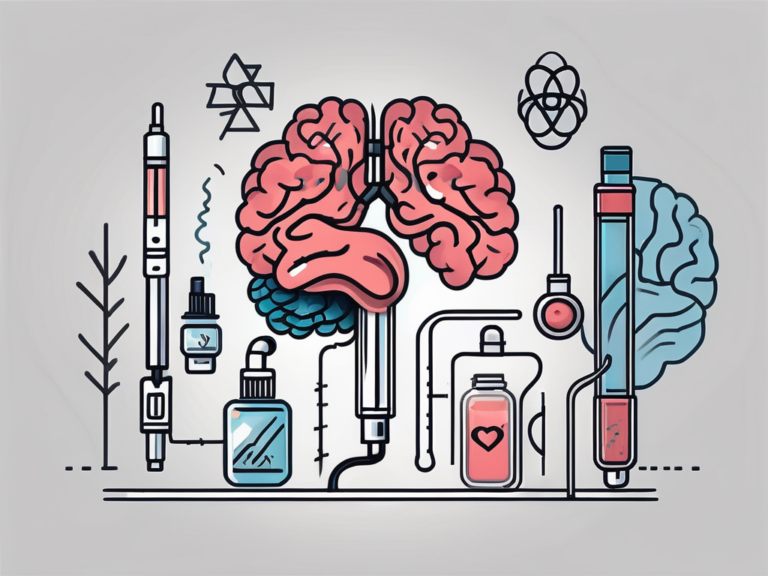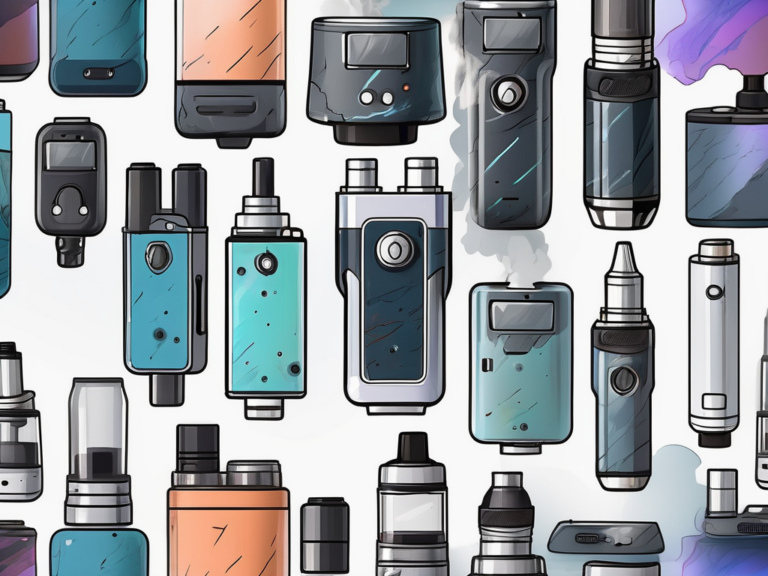what happens if a 13 year old vapes
Vaping has become a prevalent trend among teenagers in recent years, and it’s essential to understand the implications it can have on their health and well-being. In this article, we will explore the various aspects of teenage vaping and shed light on the potential consequences for 13-year-olds specifically.
Understanding Vaping and Its Popularity Among Teens
Vaping, also known as the use of electronic cigarettes or e-cigarettes, involves inhaling and exhaling aerosol produced by a device. These devices, often resembling USB flash drives or pens, heat a liquid containing nicotine, flavorings, and other chemicals. While vaping was initially marketed as a healthier alternative to smoking traditional cigarettes, its popularity among teenagers has surged.
As vaping continues to gain traction among teens, concerns have been raised about the potential health risks associated with this trend. Studies have shown that the aerosol produced by vaping devices can contain harmful substances such as heavy metals, ultrafine particles, and volatile organic compounds. The long-term effects of inhaling these substances are still not fully understood, leading to debates about the overall safety of vaping, especially for young users.
The Basics of Vaping
Vaping devices consist of a battery, an atomizer, and a cartridge or pod containing the e-liquid. When a user inhales, the device heats the e-liquid, turning it into an aerosol, which is then inhaled into the lungs. This process is often referred to as “vaping.”
Furthermore, the market for vaping products has expanded rapidly, with a wide range of devices and e-liquid flavors now available to consumers. From sleek, high-tech mods to discreet pod systems, users have a plethora of options to choose from based on their preferences and vaping experience. The customization aspect of vaping appeals to many individuals, allowing them to tailor their vaping experience to suit their tastes and needs.
Why Teens are Drawn to Vaping
There are various reasons why teenagers are drawn to vaping. One significant factor is the perceived cool factor associated with vaping. Additionally, the availability of appealing flavors, such as fruit or candy, might attract younger individuals. Social influences and peer pressure also play a significant role in a teenager’s decision to start vaping.
Moreover, the rise of social media influencers and online vaping communities has contributed to the normalization and glamorization of vaping among young people. With influencers showcasing their vaping routines and promoting different products, teens are often exposed to a curated image of vaping that may not fully reflect the potential risks and consequences associated with this behavior.
The Physical Effects of Vaping on a 13-Year-Old
As we delve deeper into the immediate health impacts of vaping on a 13-year-old, it’s crucial to understand the intricate ways in which e-cigarettes can affect a young individual’s body. Apart from the well-known risks associated with nicotine exposure, such as impaired attention and learning, there are other concerning substances present in e-cigarette aerosol. Heavy metals like lead and volatile organic compounds such as benzene can also be found in the aerosol, posing additional threats to the developing body of a teenager.
Moreover, the act of vaping itself can have physical consequences beyond the chemical components of e-cigarettes. The repetitive motion of inhaling and exhaling vapor can potentially irritate the respiratory system, leading to symptoms like coughing, throat irritation, and shortness of breath. These immediate effects may serve as warning signs of the body’s negative response to the presence of foreign substances.
Immediate Health Impacts
When a 13-year-old vapes, they are exposed to various immediate health risks. The aerosol from e-cigarettes contains harmful substances such as nicotine, heavy metals, and volatile organic compounds. Nicotine, an addictive substance, can have detrimental effects on a teenager’s developing brain, potentially leading to impaired attention, learning, and addiction.
In addition to nicotine, e-cigarette aerosol can contain dangerous chemicals like formaldehyde, acrolein, and acetaldehyde, which can irritate the lungs and cause respiratory issues. Furthermore, the fine particles in the aerosol can reach deep into the lungs, potentially causing inflammation and breathing difficulties.
Long-Term Health Risks
The long-term health risks of vaping for 13-year-olds remain a significant concern. While research in this area is still emerging, studies have indicated that vaping can lead to an increased risk of respiratory and cardiovascular issues. Additionally, the potential for addiction to nicotine may pave the way for future cigarette smoking.
The Psychological Consequences of Vaping at a Young Age
Addiction and Dependency
Teenagers who start vaping at a young age are at a higher risk of developing addiction and dependency on nicotine. This addiction can have long-lasting impacts on their physical and mental health, making it harder for them to quit vaping or smoking in the future.
Furthermore, the addictive nature of nicotine can lead to a cycle of dependence, where individuals feel the need to vape regularly to satisfy their cravings. This can not only affect their daily routines but also create financial burdens as they spend more money on vaping products to feed their addiction.
Mental Health Concerns
Research suggests a potential link between teenage vaping and mental health concerns. It is yet to be fully understood whether vaping exacerbates pre-existing mental health conditions or contributes to the development of new ones. However, it is crucial to recognize the potential impact on emotional well-being and address any underlying mental health issues promptly.
In addition to the direct effects of nicotine on the brain, the social implications of teenage vaping can also impact mental health. Peer pressure, social isolation, and the stigma associated with addiction can contribute to feelings of anxiety, depression, and low self-esteem among young vapers. Addressing these underlying emotional challenges is essential in supporting the overall well-being of teenagers who vape.
Legal Implications of Underage Vaping
Laws Regarding Vaping and Minors
In many jurisdictions, including the United States, the legal age to purchase and possess e-cigarettes and vaping products is 18 or 21. It is essential to familiarize ourselves with local laws and regulations regarding vaping to ensure compliance and protect young individuals from illegal activities.
Moreover, it is important to note that the enforcement of these laws varies from state to state and country to country. For example, some regions have implemented strict penalties for businesses that sell vaping products to minors, including hefty fines and potential license revocation. Understanding the nuances of these regulations is crucial for both vendors and consumers to avoid legal entanglements.
Potential Legal Consequences for Underage Vapers
Underage vaping can have serious legal ramifications. Selling or providing e-cigarettes to minors is strictly prohibited and can result in legal penalties. Furthermore, possession or use of e-cigarettes may lead to disciplinary measures at school and legal issues involving parents or guardians.
Additionally, the rise of underage vaping has prompted lawmakers to consider further restrictions and penalties to curb this concerning trend. Some jurisdictions are exploring the implementation of educational programs aimed at informing youth about the dangers of vaping and the potential legal consequences they may face. These initiatives seek to address the root causes of underage vaping and promote healthier choices among young individuals.
How to Prevent Teen Vaping
Educating Teens about the Risks
One of the most effective ways to prevent teen vaping is through education. Providing accurate information about the potential risks and consequences of vaping can help teenagers make informed decisions about their health. Schools, healthcare professionals, and parents all play a crucial role in spreading awareness and initiating conversations about vaping.
Understanding the chemical composition of e-cigarettes and vape pens is essential in educating teens about the risks associated with vaping. Nicotine, the primary addictive substance in these products, can have detrimental effects on adolescent brain development, leading to long-term cognitive impairments. Additionally, the aerosols produced by vaping devices contain harmful chemicals that can damage the respiratory system and increase the risk of respiratory illnesses.
Role of Parents and Schools in Prevention
Parents and schools must work hand in hand to prevent teen vaping. Open communication between parents and their children is vital. Parents should create a supportive environment that encourages dialogue and empowers their children to make healthy choices. In schools, implementing comprehensive tobacco and vaping prevention programs can help educate students about the risks associated with vaping.
Engaging teenagers in discussions about peer pressure and the marketing tactics used by the vaping industry can empower them to resist the influence of their peers and media messages promoting e-cigarette use. By fostering critical thinking skills and providing accurate information, parents and educators can equip teens with the knowledge and confidence to make informed decisions regarding their health.
As we navigate the complexities of teenage vaping, it is crucial to stay informed and promote healthy choices. By understanding the physical and psychological consequences of vaping at a young age, we can take proactive measures to protect our young generation and guide them towards healthier alternatives.






